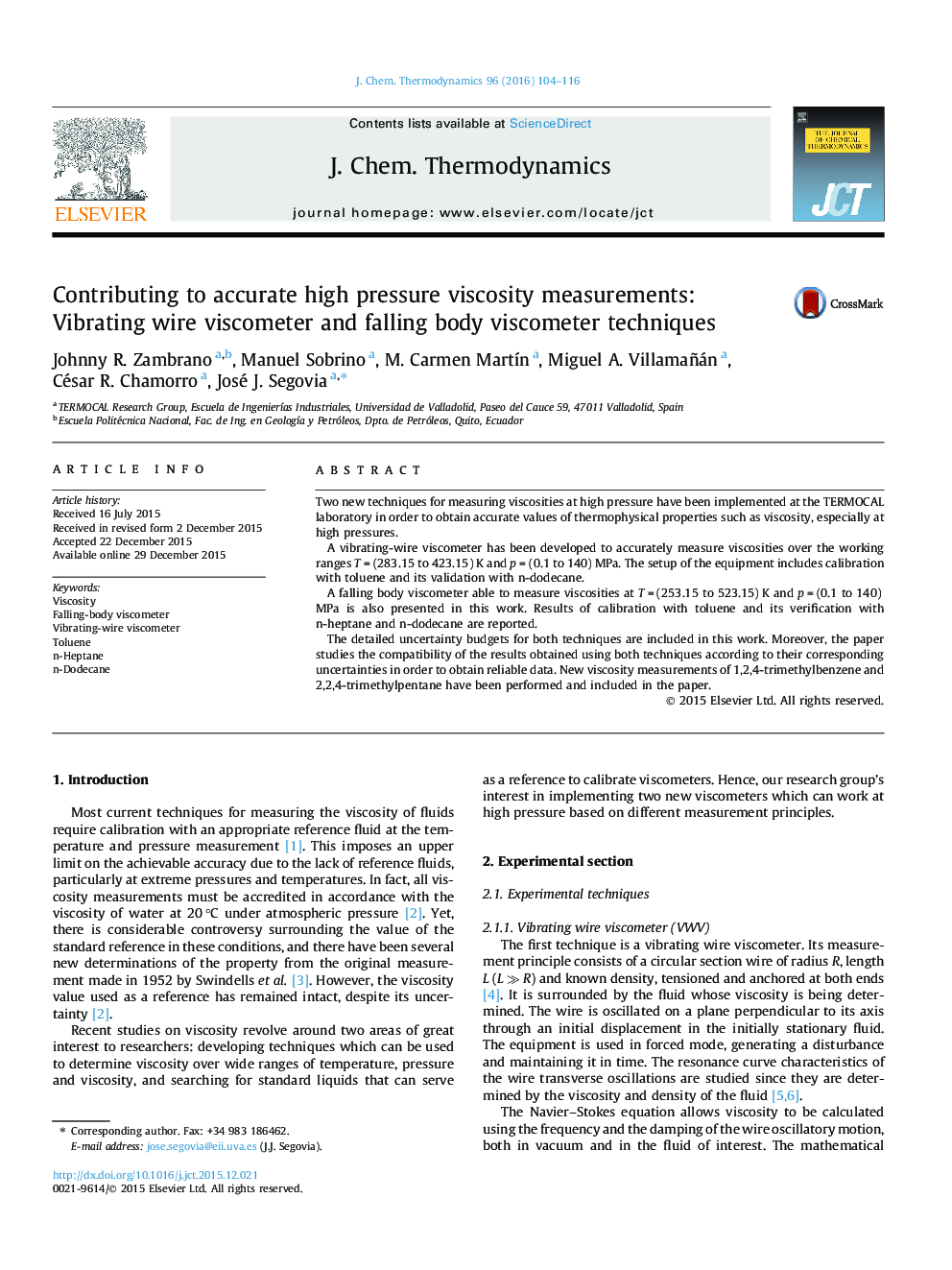| Article ID | Journal | Published Year | Pages | File Type |
|---|---|---|---|---|
| 215069 | The Journal of Chemical Thermodynamics | 2016 | 13 Pages |
•The set-up of two different viscometers (vibrating wire and falling body) is presented.•Rigurous uncertainty calculations were carried out and detailed in the paper.•The compatibility of these two techniques was tested by comparing their experimental results.•Viscosities for some hydrocarbons are reported.
Two new techniques for measuring viscosities at high pressure have been implemented at the TERMOCAL laboratory in order to obtain accurate values of thermophysical properties such as viscosity, especially at high pressures.A vibrating-wire viscometer has been developed to accurately measure viscosities over the working ranges T = (283.15 to 423.15) K and p = (0.1 to 140) MPa. The setup of the equipment includes calibration with toluene and its validation with n-dodecane.A falling body viscometer able to measure viscosities at T = (253.15 to 523.15) K and p = (0.1 to 140) MPa is also presented in this work. Results of calibration with toluene and its verification with n-heptane and n-dodecane are reported.The detailed uncertainty budgets for both techniques are included in this work. Moreover, the paper studies the compatibility of the results obtained using both techniques according to their corresponding uncertainties in order to obtain reliable data. New viscosity measurements of 1,2,4-trimethylbenzene and 2,2,4-trimethylpentane have been performed and included in the paper.
Graphical abstractComparison between the viscometers developed in the laboratory: vibrating-wire viscometer and falling-body viscometer.Figure optionsDownload full-size imageDownload as PowerPoint slide
